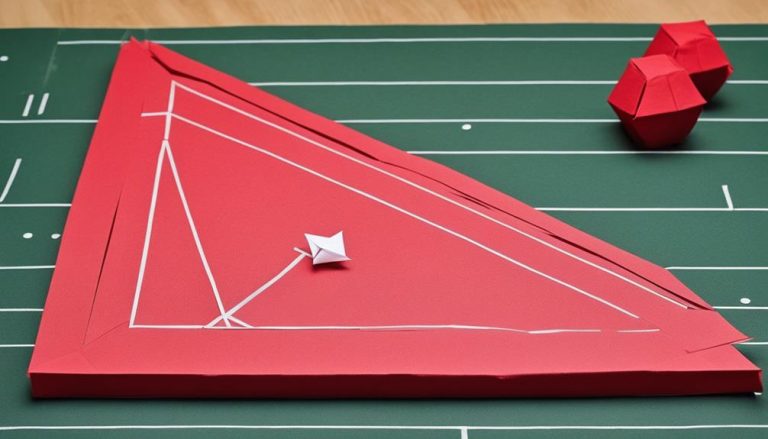General Rules of Indoor Netball
Knowing the general rules of indoor netball is essential for a thrilling experience. Understand court dimensions, player positions, scoring, game duration, substitutions, offside rules, equipment needs, umpire roles, and the code of conduct. Master these aspects for competitive play. Digging deeper into each rule will enhance your gameplay.
Court Dimensions
When setting up an indoor netball court, the dimensions must adhere to specific measurements to guarantee important play and safety for all players involved. The court markings play a critical role in guiding netball strategy and player footwork. Understanding these markings ensures that players can move efficiently during the game, maximizing their passing techniques and overall performance.
The center circle is a pivotal area on the court, with a radius of 0.9 meters. This circle determines where the game begins and restarts after each goal. Making sure players are positioned correctly within this circle can give your team an advantage when it comes to gaining possession of the ball. Additionally, the goal circle, with a radius of 4.9 meters, is where most of the action happens. Mastering the footwork in this area can greatly improve shooting accuracy and overall scoring opportunities.
The transverse line divides the court into two halves, providing a clear boundary for players. Staying within this boundary is important for maintaining possession and executing effective passing techniques. By understanding and utilizing the court dimensions effectively, you can enhance your netball skills and contribute to your team's success on the court.
Player Positions
To excel in indoor netball, understanding the specific player positions is key to effectively strategizing and coordinating gameplay on the court. In indoor netball, each player has a designated position that comes with specific roles and responsibilities. There are seven player positions in indoor netball: Goal Shooter (GS), Goal Attack (GA), Wing Attack (WA), Centre (C), Wing Defence (WD), Goal Defence (GD), and Goal Keeper (GK).
Player roles in indoor netball are vital for both defensive strategies and offensive plays. The Goal Shooter and Goal Attack are primarily responsible for scoring goals, while the Wing Attack focuses on feeding the ball to the shooters. The Centre is the link between defense and attack, facilitating team communication and transitions. The Wing Defence, Goal Defence, and Goal Keeper work together to prevent the opposing team from scoring, employing various defensive strategies to intercept passes and block shots.
Effective team communication is essential in indoor netball to ensure smooth coordination between players. Players must communicate constantly on the court, signaling plays, calling for passes, and providing support to their teammates. Understanding and executing player positions optimally can have a profound impact on the outcome of the game, as each position contributes uniquely to the team's overall performance. Mastering player roles and strategic gameplay is fundamental to achieving success in indoor netball.
Scoring System
Understanding how points are scored in indoor netball provides an essential insight into the game's dynamics and strategy. In this fast-paced sport, each goal contributes greatly to the outcome of the match. Here's a breakdown of how the scoring system works:
- Offensive Plays: Scoring in indoor netball heavily relies on offensive plays. Quick passes, strategic movement, and accurate shooting are essential to secure points for your team. Coordination between players is key to creating scoring opportunities and outwitting the opposing defense.
- Defensive Techniques: While scoring is important, preventing the other team from scoring is equally crucial. Utilizing defensive tactics such as intercepting passes, marking opponents closely, and disrupting their plays can help maintain a lead or stage a comeback. A solid defense can also lead to turnovers, giving your team more chances to score.
- Strategy Tactics and Team Communication: Scoring points in indoor netball goes beyond individual skill. Effective strategy tactics, such as setting up screens, creating space, and exploiting weaknesses in the opposing defense, can make a significant impact. Additionally, clear team communication is essential for executing plays, adjusting strategies on the fly, and capitalizing on scoring opportunities.
Mastering the scoring system in indoor netball requires a combination of offensive prowess, defensive resilience, and strategic teamwork. By honing these skills, your team can increase its chances of success on the court.
Game Duration
When it comes to playing indoor netball, understanding the game duration rules is essential. You'll want to know the timing rules and what happens if the game goes into overtime. These points will make sure you're prepared to play your best and navigate the game effectively.
Timing Rules
When playing indoor netball, the timing rules dictate the duration of the game, ensuring a fast-paced and exciting match for all players involved. It's important to adhere to these rules to maintain the flow and fairness of the game. Here are some key points to ponder:
- Timing Violations: Be mindful of the game clock to avoid timing violations that could result in penalties for your team.
- Team Strategies: Utilize the allocated game time wisely by strategizing with your team members on offense and defense to maximize scoring opportunities and prevent the opposing team from scoring.
- Game Duration: The game is typically divided into quarters or halves, with each segment having a specific duration. Make sure to pace yourself throughout the game to maintain energy and focus until the final whistle.
Overtime Procedures
In indoor netball, overtime procedures for game duration come into play when regular game time ends in a tie, ensuring a fair and decisive outcome for both teams. Tiebreaker rules dictate that a brief extra time period is played, usually around five minutes, to break the deadlock. During this time, player rotations become essential, as teams strategize to maintain their energy levels and defensive prowess. Coaches often emphasize quick ball movement and precise shooting to secure a lead. In case the score remains tied after the extra time, different leagues may have varied rules to determine the winner, such as a golden goal or a penalty shootout. Overtime in indoor netball intensifies the competition, requiring teams to showcase their skills under pressure.
Substitution Rules
To efficiently manage player rotations during a game of indoor netball, understanding the substitution rules is vital. Substitutions play an essential role in implementing strategic player rotations, maintaining team chemistry, and maximizing performance on the court.
- Strategic Player Rotations: Substitution rules allow teams to strategically rotate players based on factors such as playing style, fatigue levels, and match situations. By making timely substitutions, teams can guarantee that players are fresh and contribute effectively throughout the game.
- Bench Dynamics: Effective substitutions can influence the dynamics on the bench as well. Players waiting to enter the game must stay engaged, support their teammates, and be ready to make an impact once they step onto the court. Maintaining positive bench dynamics can boost team morale and cohesion.
- Team Chemistry: Substitutions also play a role in enhancing team chemistry. When executed smoothly, substitutions can help players understand each other's strengths and weaknesses, leading to better coordination and communication on the court. This understanding fosters a sense of unity and teamwork among team members.
Contact and Fouls
Alright, let's talk about the key points regarding contact and fouls in indoor netball. Understanding the contact rules is essential to avoid fouls and play the game fairly. Knowing how to navigate these aspects will help you stay on top of your game and enjoy playing netball even more.
Contact Rules
Understanding the contact rules in indoor netball is vital for players to maintain a fair and safe game environment. When engaging in defensive strategies or offensive tactics, it's important to remember the following:
- No Pushing or Shoving: Avoid unnecessary physical contact with opponents to prevent injuries and promote fair play.
- Maintain Distance: Keep a reasonable distance from the player with the ball to avoid accidental collisions.
- Use Proper Body Positioning: Focus on using your body position effectively to defend without resorting to illegal physical contact.
Fouls Explanation
When it comes to indoor netball, understanding the fouls, especially those related to contact, is essential for players to maintain a fair and competitive gameplay environment. In indoor netball, penalty rules are strictly enforced to guarantee player conduct remains respectful and sportsmanlike. Referee decisions play a vital role in determining fouls, and players must abide by these judgments to uphold the integrity of the game. It's important for teams to strategize on how to minimize fouls while still playing aggressively and effectively. By being mindful of foul regulations and focusing on clean gameplay, teams can avoid penalties that may impact their performance. Remember, good sportsmanship and fair play are key components of successful indoor netball matches.
Offside Regulations
To play indoor netball effectively, players must adhere to the offside regulations at all times during the game. Understanding offside violations, strategies, penalties, and tactics is essential for maintaining a fair and competitive match. Here are some key points to keep in mind:
- Stay Behind the Line: One of the fundamental offside regulations in indoor netball is that players must make sure they are behind the designated lines in the court. Crossing these lines can result in offside violations and penalties, affecting the flow of the game.
- Timing and Positioning: Strategically positioning yourself on the court is important to avoid offside penalties. By timing your movements correctly and being aware of your positioning in relation to the lines, you can minimize the risk of committing offside fouls.
- Communication with Teammates: Effective communication with your teammates is crucial in preventing offside violations. By coordinating movements and signaling when a player is close to the offside line, you can work together to stay within the boundaries of the regulations.
Equipment Requirements
For a successful indoor netball game, making sure that you have the right equipment is vital to your performance on the court. Safety precautions should always come first, so wearing appropriate footwear that provides good grip on the indoor court is critical. This helps prevent slipping and potential injuries during quick movements and sudden stops.
Equipment maintenance is also crucial in indoor netball. Ensure your netball shoes are clean and in good condition to avoid any damage to the court surface. Regularly checking your equipment, such as knee pads and ankle braces, for any signs of wear and tear is necessary to ensure they provide adequate protection during the game.
Player camaraderie is fostered through sharing equipment when needed. Your team should have spare netballs available for warm-ups and game time. Having extras ensures a smooth flow of play and minimizes delays. Additionally, discussing equipment preferences with your teammates can help create a cohesive team strategy. For instance, agreeing on the type of netball to use can enhance passing accuracy and overall team performance.
Umpires Role
The pivotal figure enforcing the rules and maintaining order on the indoor netball court is the umpire. They play an essential role in ensuring fair play and sportsmanship among players. Here are some key aspects of the umpire's role:
- Umpire communication: Clear and effective communication is essential for the umpire to convey decisions, explanations, and instructions to the players during the game. Whether it's signaling a violation or explaining a call, good communication helps maintain a smooth flow of the game.
- Player interactions: Umpires are responsible for managing player interactions on the court. This includes diffusing any potential conflicts, addressing unsportsmanlike behavior, and promoting a positive playing environment. By monitoring player interactions, umpires help uphold the spirit of the game.
- Fair play, sportsmanship: Upholding the principles of fair play and sportsmanship is a core responsibility of the umpire. They must ensure that all players adhere to the rules, show respect towards opponents and officials, and play with integrity. Umpires play a crucial role in fostering a competitive yet respectful atmosphere on the court.
Code of Conduct
As a player on the indoor netball court, abiding by the Code of Conduct is crucial to maintaining a respectful and fair playing environment. Respectful behavior is essential on and off the court. Treat your opponents, teammates, and officials with dignity and courtesy. Avoid any form of unsportsmanlike conduct, including trash-talking, taunting, or aggressive behavior. Remember, indoor netball is not only about skill but also about sportsmanship.
Following sportsmanship guidelines guarantees that the game is played in a spirit of fairness and camaraderie. Celebrate good plays from both teams, whether they are your own or your opponents'. Acknowledge the efforts of your teammates and opponents, regardless of the outcome. Respect the decisions made by the umpires, even if you may not agree with them. Keep in mind that they are there to ensure a fair game for everyone.
Maintaining a positive attitude and demonstrating good sportsmanship reflects your character as a player. It sets the tone for the entire team and contributes to a more enjoyable playing experience for everyone involved. By upholding the Code of Conduct, you not only show respect for the game but also for yourself and those around you.
Frequently Asked Questions
Can Players Wear Jewelry While Playing Indoor Netball?
You shouldn't wear jewelry while playing indoor netball. Safety concerns arise due to the risk of injury. Performance impact is also a factor, affecting your game. It's best to leave the bling off the court.
Are There Any Specific Rules Regarding the Use of Footwear on the Court?
When playing indoor netball, make sure to wear non-marking court shoes for safety and to prevent damage to the court. Footwear regulations help maintain court safety and guarantee fair play for everyone.
Is There a Minimum or Maximum Number of Players Allowed on a Team?
You can have a fun game with indoor netball! Each team needs at least five players to compete. Don't go overboard though, as the maximum number of players allowed on a team is seven. Enjoy the game!
Are There Any Restrictions on the Types of Uniforms or Clothing That Players Can Wear During a Game?
When it comes to uniform regulations and clothing restrictions in indoor netball, you're free to wear comfortable athletic gear. Just make sure your outfit doesn't have zippers, buttons, or anything that could cause injury during the game.
Are There Any Specific Rules Regarding the Use of Technology or Communication Devices During a Game?
When it comes to technology in the game, you'll be amazed by the strict rules. Player distractions from devices are a big no-no. Keep communication etiquette exceptional and game strategy on point!
Conclusion
Now that you know the general rules of indoor netball, you're ready to hit the court and play like a pro. Just remember, mastering these rules is like weaving through a maze – once you figure out the twists and turns, you'll be scoring goals left and right. So lace up those shoes, grab your teammates, and get ready to dominate the game! Happy playing!






